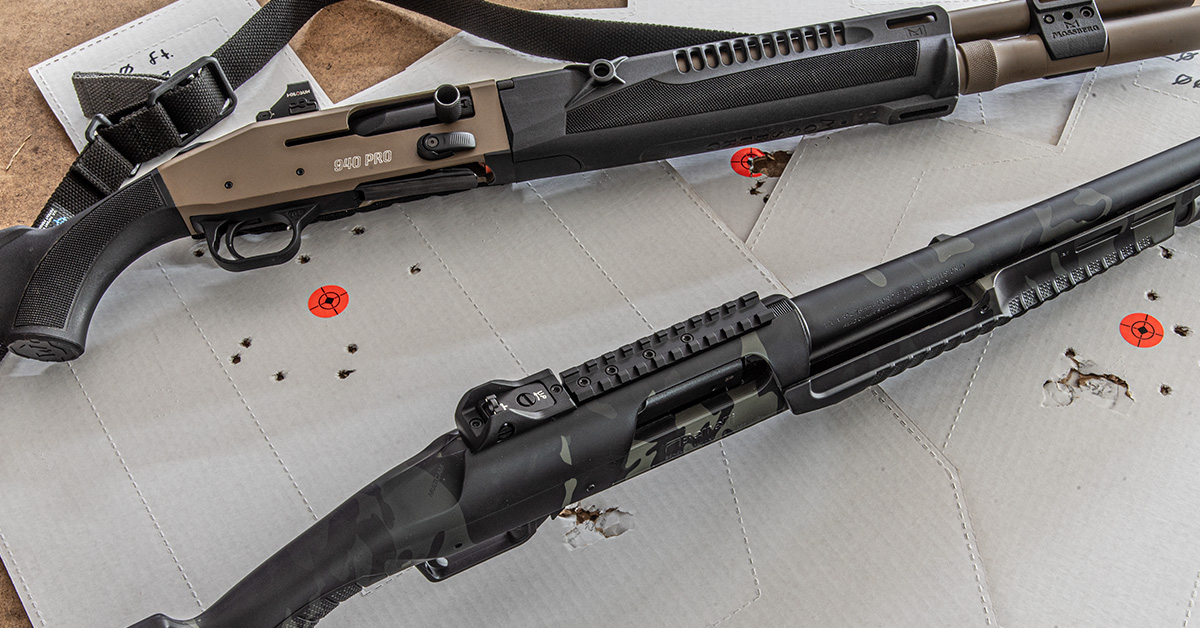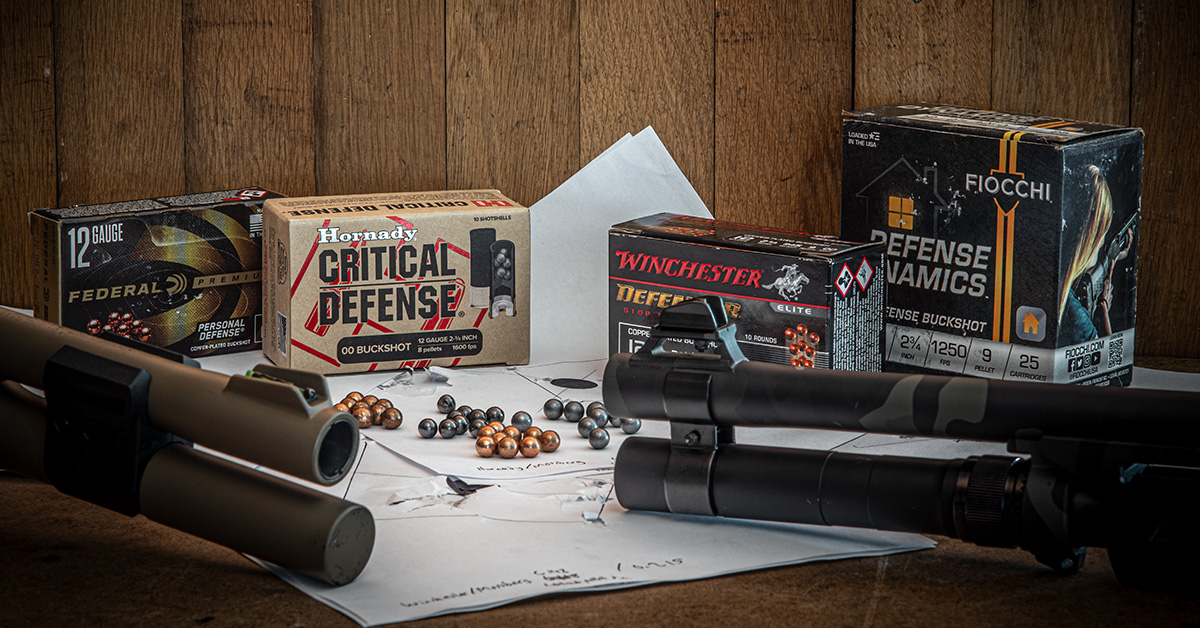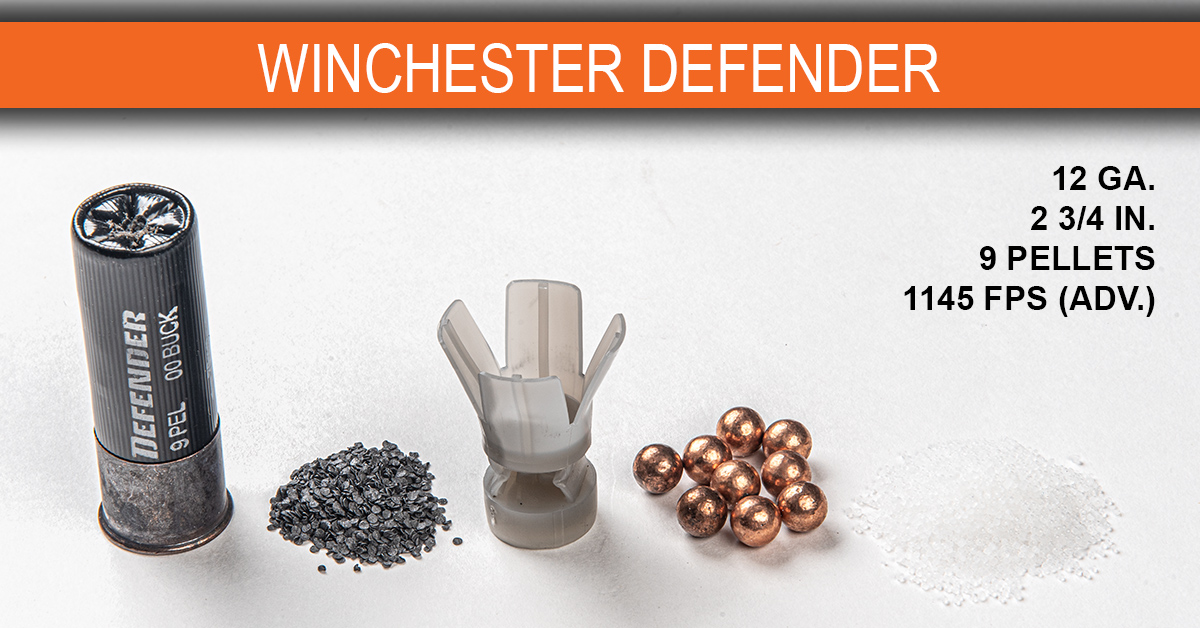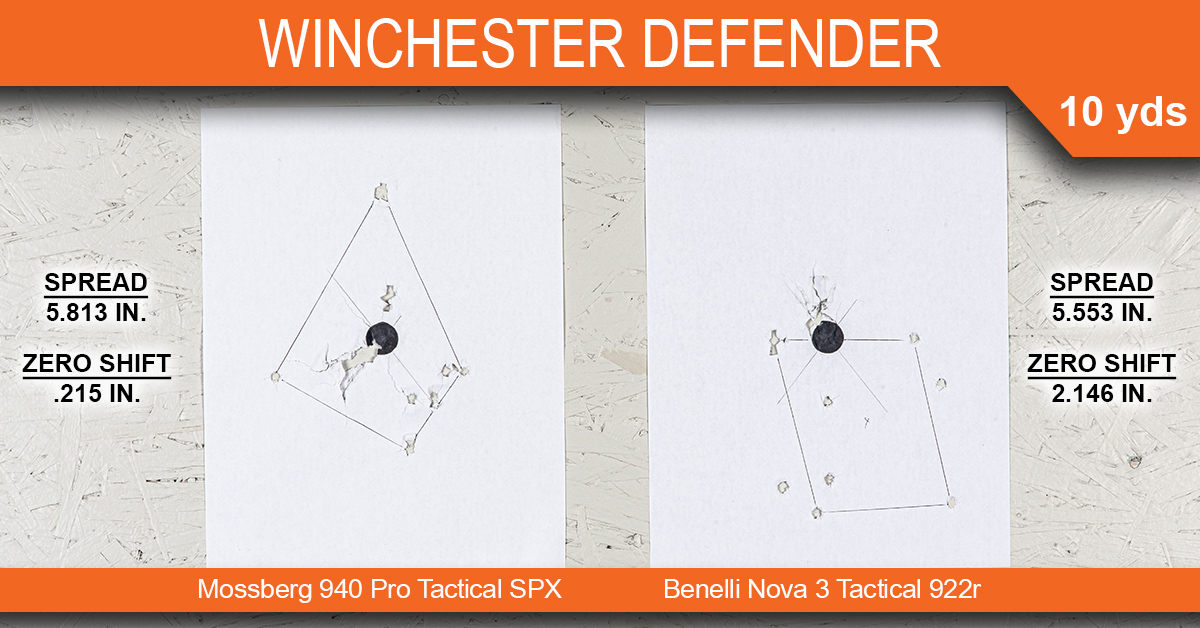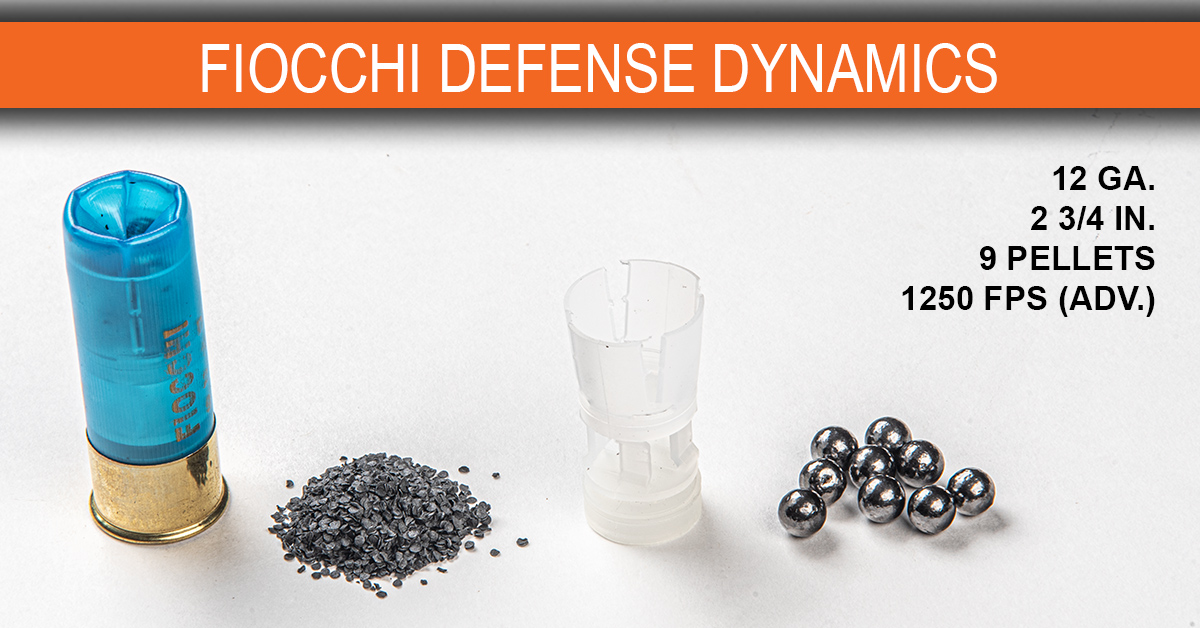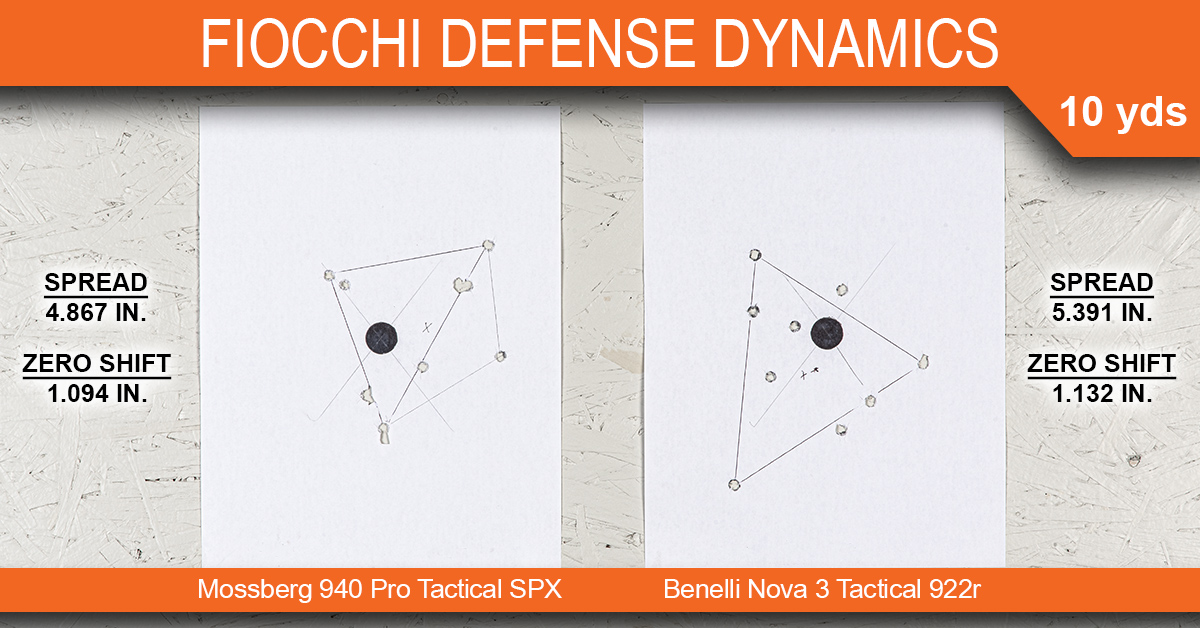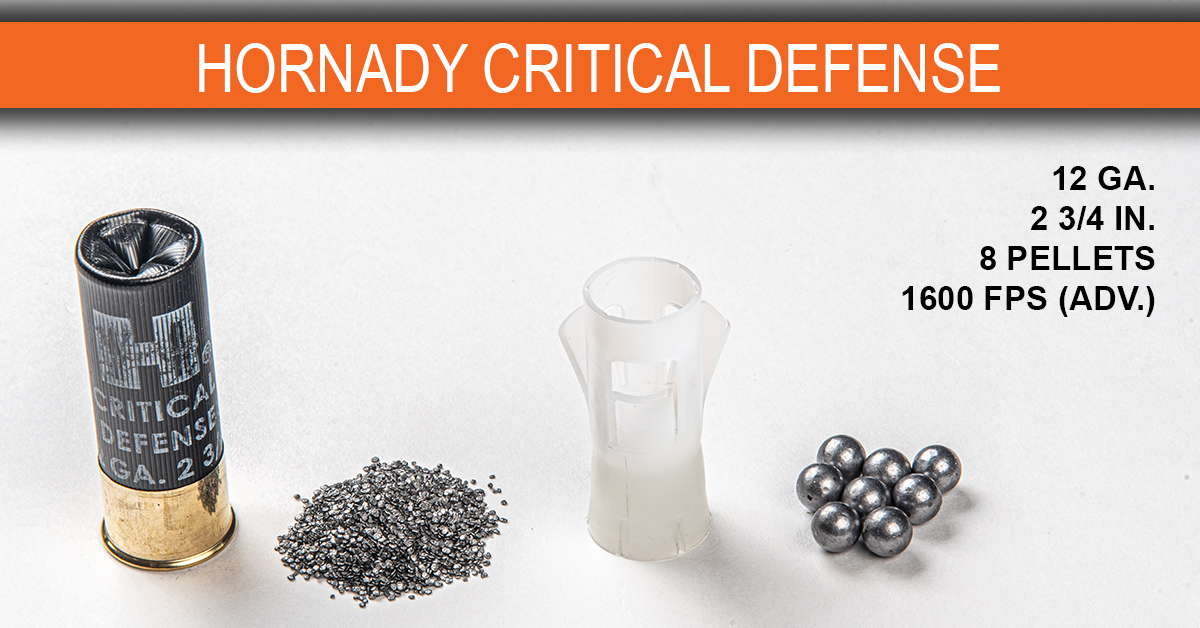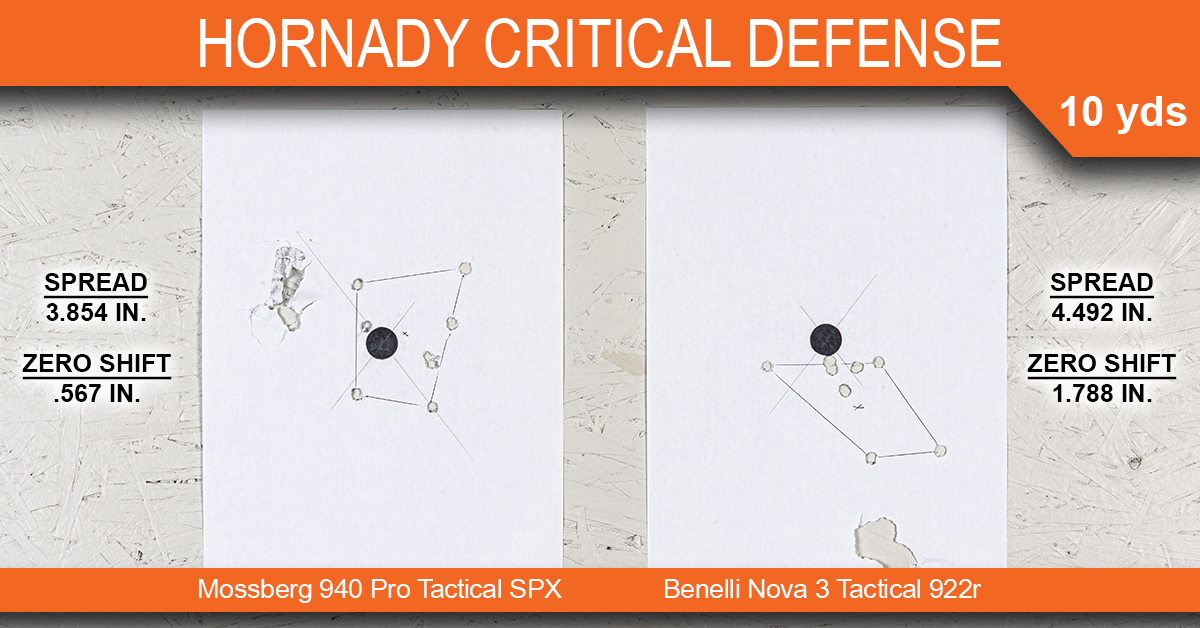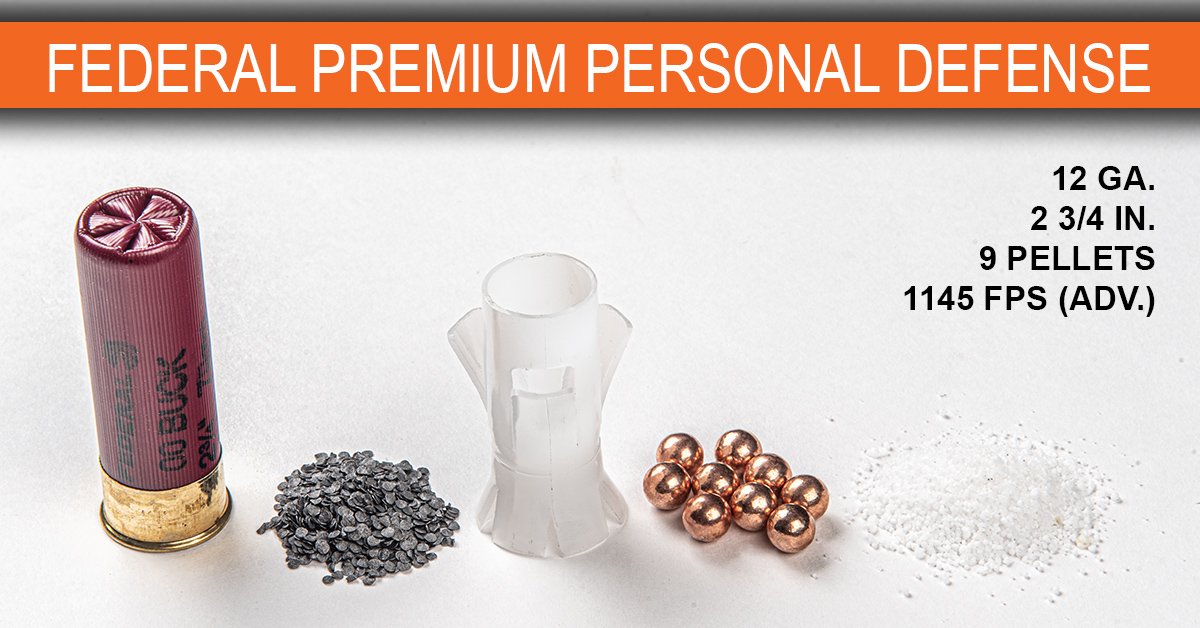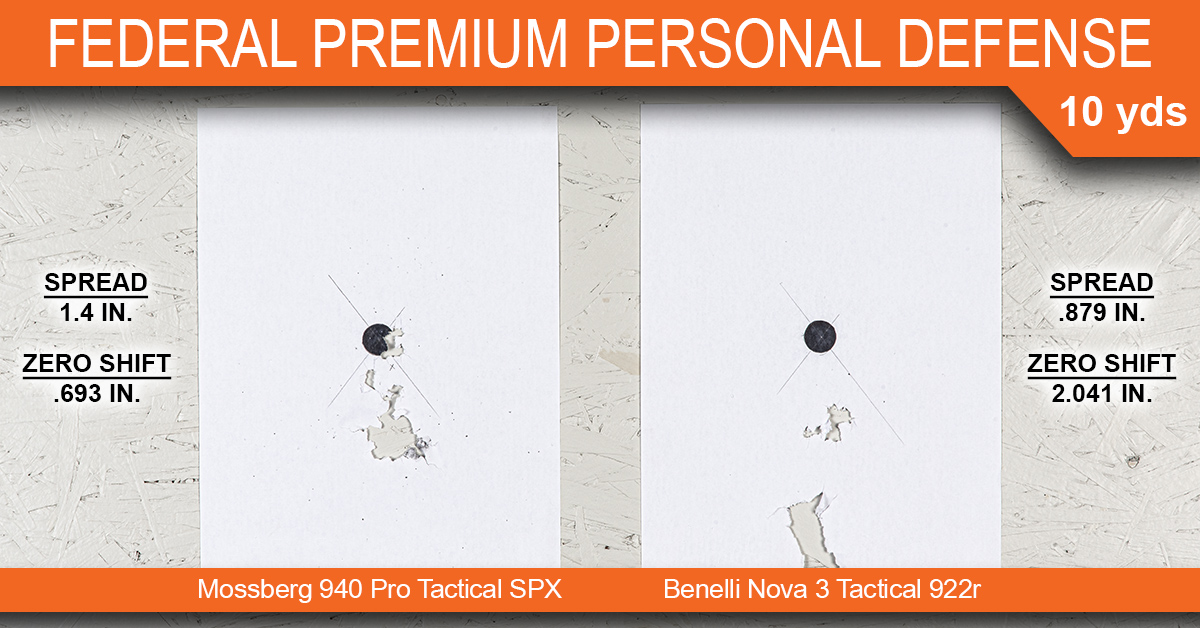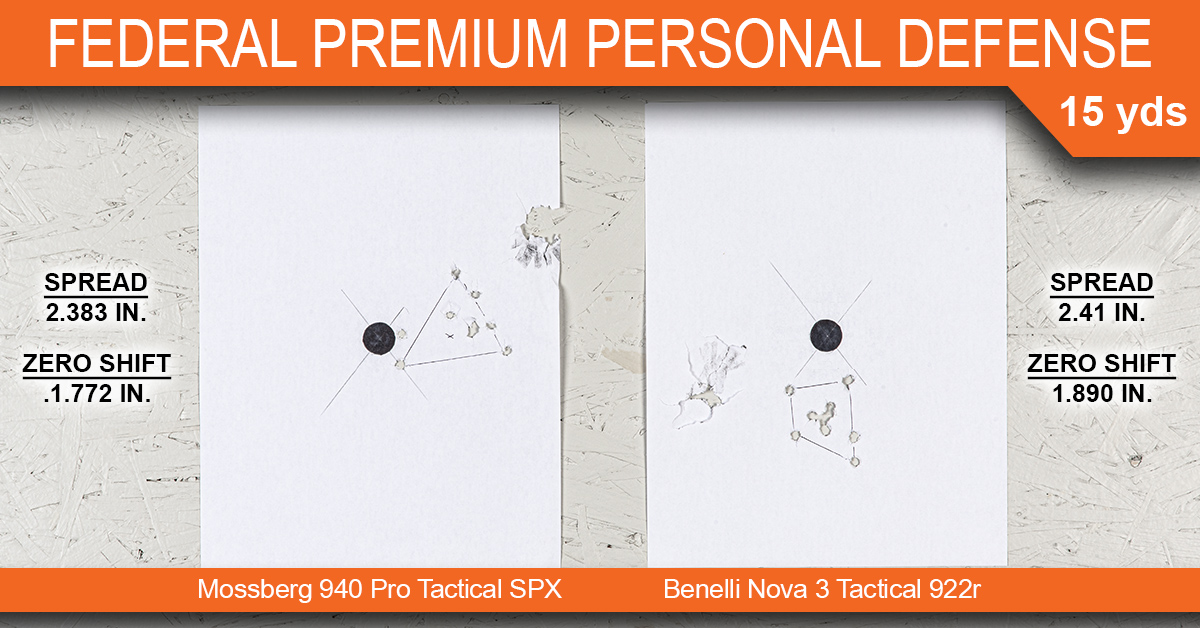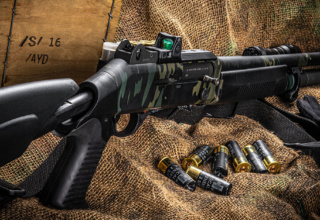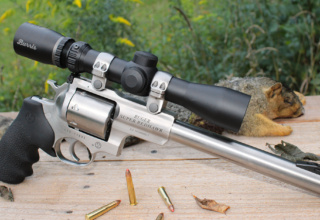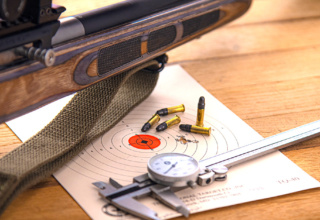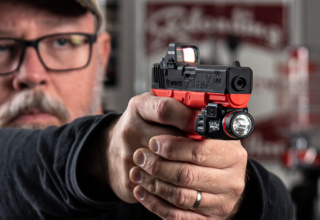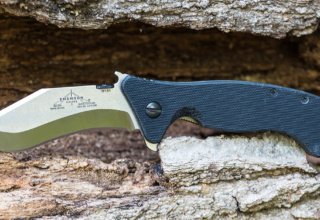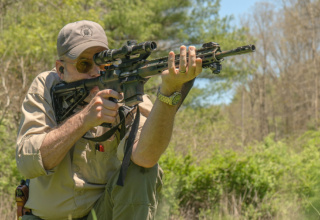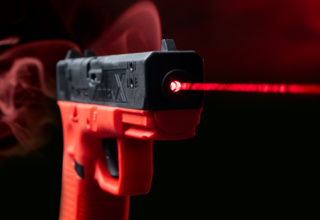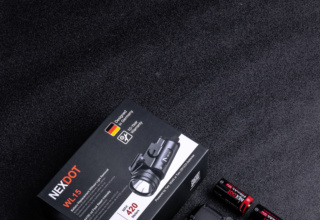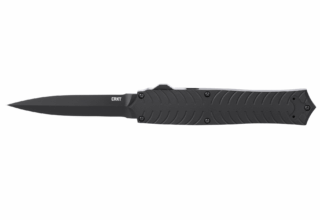How do the top defensive shotgun buckshot loads compare to each other? The results may surprise you!
by Rob Reaser
More than a few times we’ve addressed the myth that a defensive shotgun, primed with common #00 buckshot, need not be precisely aimed to be effective against a threat. On the contrary, we’ve proven that a shotgun must, indeed, be carefully aimed to achieve the desired effect. That’s because, within the typical home defense distances of five to ten yards, modern defensive shotgun buckshot loads hold a relatively tight pattern. In other words, the entire notion that pointing a shotgun in the general direction of the target and spraying lead is going to deliver the intended results is bunk.
Really, this idea should have died a merciless death long ago, but Hollywood fantasies persist.
The other day, I bounced around several forums where participants were discussing the best defensive buckshot ammo. Some praised the merits of tight pellet groups; others argued for the contrary. Opinions seemed somewhat evenly split, with the latter group seeming to hold firmly that the whole point of a defensive shotgun is to send an ever-widening cone of round balls toward the threat in anticipation that “something is going to hit the target.” One opining forum member even said something along the lines of, “If I have to aim a shotgun, why bother? I could just use my pistol.”
I’ll grant that part of the value of a defensive shotgun — especially where potential distances from a threat may exceed the average “in-home” range — is that you can likely get more hits on target than you can with a single-projectile handgun or long gun with a reduced critical aiming threshold. The shotgun, you see, has a big advantage over a handgun in a defensive encounter for this very reason: you’re less likely to miss your target.
But how much “pellet spread” is desirable or needed for personal defense work? Keep in mind that the typical home defense distance is 5-10 yards, or 15-30 feet. The typical buckshot loading fired from an 18.5-inch cylinder bore shotgun will deliver nine #00 pellets disbursed over the human vital zone out to around 40 feet (13.33 yards) with careful center-of-mass aiming. At 50-60 feet (16.66-20 yards), you’re likely to either drop a pellet or two, or several of those pellets may strike well outside of the critical vital organ zone. Additionally, those dropped pellets represent potential collateral damage to other people in the area or to those who may be in an adjacent room.
From 70 feet and beyond, the pellet-to-strike ratio can quickly go south. Sure, you certainly can deter and possibly even eliminate the threat with #00 at these longer distances, but now you’re facing a new consideration on top of the increased potential for collateral damage, and that is legal justification. Engaging a threat that is more than 25 or 30 yards away from you may absolutely be justifiable in the eyes of the law, but that won’t stop an aggressive prosecuting attorney from claiming you had the opportunity, and thus the obligation, to flee rather than to lethally engage. This, of course, depends on the laws in your state and the philosophical leanings of prosecutors and judges in your area.
Given this, it seems reasonable to conclude two things. First, the line of demarcation for acceptable/unacceptable engagement for the typical #00 buckshot load is around 60 feet/20 yards. At further distances, there is an increased chance of collateral damage and legal jeopardy. Second, the tightest possible pellet spread is desirable to reduce potential collateral damage at all distances and to deliver the kind of maximum lethality that comes with a tight wad of #00 pellets striking your target in excess of 1,000 feet per second.
And to the nimrod spouting the poorly discerned question previously mentioned — “If I have to aim a shotgun, why bother? I could just use my pistol” — the answer is obvious. Would you feel more confident of surviving a gun fight if you put nine rounds of .33-caliber pellets or just one .355-caliber (9mm) round into an attacker’s chest? Remember, regardless of the weapon platform chosen — shotgun or handgun or long gun — precise aiming is essential.
You don’t need to be a Mensa member in good standing to figure this out.
Since you must aim a shotgun as carefully as you would a handgun or a carbine at typical personal/home defense distances, and since the smallest pellet group size is desirable at any distance, the question becomes, “Which #00 buckshot ammo delivers the tightest group” or are they all generally the same?
To get a bead on the answer, so to speak, we decided to test four different defensive shotgun loads from four of today’s top defensive shotshell manufacturers — Fiocchi, Hornady, Federal, and Winchester. Admittedly, this is a limited test selection but given that these represent the mainstream defensive loads most available across the country, it seemed to be a sufficient test group.
To keep this evaluation under control, I ensured the sighting systems on both test guns — Mossberg’s 940 Pro Tactical SPX and Benelli’s Nova 3 Tactical 922r — were zeroed. For this, I employed Fiocchi Field Dynamics slugs as they have proven to be exceptionally accurate in previous testing.
Winchester Defender (Honorable Mention)
Our first entry is Winchester’s Defender. In terms of ballistics, it sits in the “average” zone with a factory velocity rating of 1145 fps. Winchester uses a flake powder seated beneath a typical four-petal, front-opening cushioned wad design. The base, which sits over the powder charge, is non-slitted, meaning it does not expand or “petal out” once it leaves the muzzle. It acts only as a gas seal. The cup, or portion of the wad that contains the shot, is shallow. Winchester applies copper plating to the pellets for enhanced surface uniformity and lubricity to promote penetration. Winchester also utilizes buffer to protect shot integrity as the load moves down the barrel.
Of the four test loadings, the Winchester Defender exhibited the widest pellet spread at 10 yards. This included launching from both the Mossberg 940 Pro Tactical SPX and the Benelli Nova 3 Pro Tactical 922r. The average spread from both guns combined was 5.683 inches with an average velocity of 1021.6 fps — a bit shy of the advertised velocity according to our Garmin Xero C1 Pro chronograph. Still, that spread is going to deliver the full payload into the vitals with a well-aimed shot. Average shift from zero for this loading was 1.367 inches.
Fiocchi Defense Dynamics (Bronze)
Next up, we consider Fiocchi’s Defense Dynamics. It, too, utilizes a flake powder and a generally similar wad construction with a four-petal design and non-slitted base. The big difference between this wad and that of the Winchester is that the Fiocchi wad is made of a much more pliable plastic and a slightly longer crush zone. Further, the shot is uncoated lead. Fiocchi does not use a buffer in this loading. The company cautions that, “Due to low recoil, this product may not cycle all semi-automatic shotguns.” That said, I’ve never experienced a cycling issue with this loading.
On target, Fiocchi Defense Dynamics proved its mettle with a satisfactory 5.129-inch average pellet spread. It also held close to zero in both shotguns with an average shift of 1.113 inches — the least shift of all four test loads. Little wonder Fiocchi leads the market in competition-grade shotshells; they know how to build accuracy.
As for velocity, the average clocked 1225.2 fps. This was the second closest loading of the test group to advertised velocity.
Hornady Critical Defense (Silver)
As you can see, our third test subject is of a substantially different construction than the Winchester and Fiocchi loads. The powder is what looks like a flake/granular hybrid and instead of nine pellets, Hornady’s Critical Defense contains only eight uncoated lead projectiles.
Why eight?
We asked.
“The reason we use 8 pellets is quite simply because of the Versatite™ wad that we use,” said Hornady Marketing Communications Manager Seth Swerczek. “The volume in the wad for shot allows for 8 neatly stacked pellets, loads consistently on the ammo press, and crimps beautifully. If we loaded a 9th pellet, the consistency of the shot stack and the consistency of the crimp would be sacrificed. We’ve all heard reports about the 9th piece of shot becoming a ‘flyer’ — but for us, it’s simply loading consistency that drove the 8-pellet design.”
The wad Swerczek refers to is Hornady’s Versatite wad. First, the base is of a slit design that allows for a subtle flaring of the six petals as the wad exits the muzzle. Next, there is no crush zone between the base and the shot cup, so all available energy is transferred to the payload.
Most important is the front portion of the wad. Rather than the usual three- or four-petal forward-opening design, the Versatite wad has three forward-opening petals built into a long, almost cage-like shot cup. This does two things. First, the petals serve as a “brake” for the wad, allowing it to easily strip off the shot string and, second, the elongated cup makes for a denser downrange shot column.
How dense?
As you can see, the Critical Defense load delivers a tighter pattern than the Fiocchi by almost an inch and just a hair over 1.5 inches tighter compared to the Winchester. The overall average spread of the Critical Defense was 4.173 inches at 10 yards with an average velocity of 1484.9 fps in both test guns. Zero shift average was 1.177 inches. A well-aimed shot with this loading is going to deliver serious terminal performance.
Federal Premium Personal Defense (Gold)
And now we come to Federal Premium’s Personal Defense w/FLITECONTROL Wad. At first blush, this loading may not look all that different compared to the Hornady Critical Defense. Nevertheless, everything is different. We’re back to a flake powder charge, nine pellets (copper-plated), buffer to protect the shot, and the crimp is a bit different than the other three test loadings. The Federal Premium load is also advertised as 1145 fps — the same as the Winchester Defender.
You’ll note that the FLITECONTROL wad looks essentially the same as Hornady’s Versatite wad. They both have slits in the base that help stabilize the payload after exiting the muzzle and both have deep shot cups with three forward-opening petals to help the wad strip off the shot column. The FLITECONTROL plastic feels like it may be a tad thinner than that of the Versatite wad, but that’s a totally subjective observation on my part. It is definitely “slicker” on the outside than the Hornady wad. Yes, there are minor dimensional and profile differences between the two wads, but the key word here is minor.
The big question is whether there is a significant difference in ballistics.
Oh, boy…
Let me sum it up right now. The Federal Premium Personal Defense is in a different league altogether when it comes to pellet density. The average pellet distribution at 10 yards from the two test guns was a scant 1.139 inches. And, no, that is not a misprint.
When I took the 260 Defensive Shotgun class at Gunsite a couple months ago, the instructor explained that this Federal Premium loading was the preferred choice for defensive work because it consistently held the tightest downrange pellet groups. That claim is the reason for putting together this comparative test. I wanted to see first-hand just how well the Federal Premium Personal Defense would stand up to the other primary defensive buckshot loadings.
I had my answer. Just, wow…
Because the pellet spread proved to be so incredibly tight, I decided to push the targets out to 15 yards and see what would happen.
At 15 yards, the Federal Premium load opened a little bit, averaging 2.396 inches. Even with an extra 15 feet distance, this load is still almost two inches tighter than the Hornady is at 10 yards and just under three inches tighter than the Fiocchi loading at 10 yards. It beats the Winchester Defender by over three inches.
I have no idea what kind of magic dust or secret incantations Federal sprinkles onto its Personal Defense loads, but whatever it is, it works bigly.
The Wrap…by the Numbers
All the presented #00 loads are solid choices for the home defense shotgun. Let this test be your guide as to the distribution of pellets you might be looking for in an 18.5-inch barrel, cylinder bore 12-gauge shotgun.
Results can and will vary from shotgun to shotgun, so any load should be tested and zeroed accordingly. Further, be sure to test your selected load’s pattern at varying distances so you fully understand pellet distribution and shift from zero. If one load doesn’t work quite well for your gun, move on to a different load and repeat the testing.

